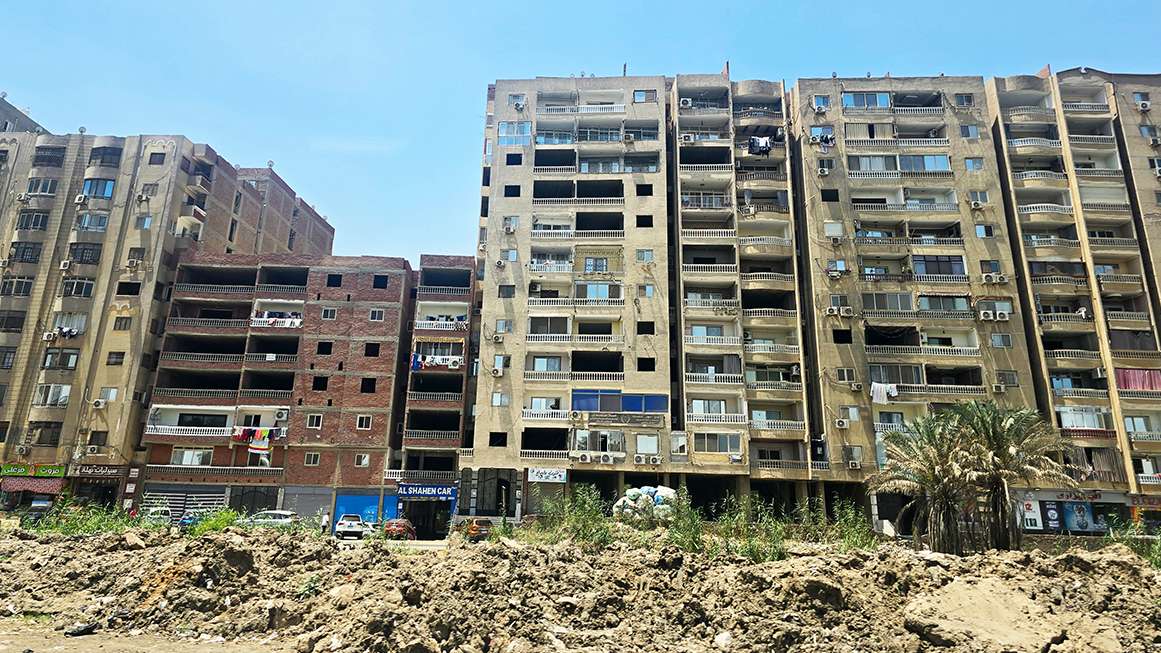By Katarina Hall
Copyright reason

Drive about 40 minutes from the Giza Pyramids to the ancient step pyramid of Saqqara and you’ll pass rows of half-built apartment blocks, skeletal overpasses, and roads that seem permanently under construction. Leave central Cairo and you’ll see more of the same: neighborhoods where concrete beams poke out of rooftops, brick walls are left raw and unpainted, and windows are missing entirely from apartments.
At first, Cairo looks as if someone pressed pause on the city mid-construction. But the phenomenon is actually the result of legal loopholes, economic improvisation, and a culture that builds for the future.
It began in 1954, when a property tax law levied hefty taxes—up to 46 percent—on completed buildings, yet entirely exempted those still under construction. So Egyptians got creative: Leave off the roof, skip the facade, don’t add a floor, and you can have a tax-free home. What’s the rush to finish it anyway?
Even when a building is technically “incomplete,” families are likely living on the first few floors while the upper levels remain empty shells. From the outside, some of these structures look like post-apocalyptic ruins, but step inside and you’ll find tiled kitchens and furnished rooms. Aesthetic appeal is low on the
priority list.
In 2008, the government tried to fix the loophole with a new law aimed at modernizing the tax code and boosting public revenue. It was meant to apply to all properties, finished or not. But its implementation was repeatedly delayed due to criticism and political upheaval, and the law was ultimately never enforced. Relaunches and revivals of the law have been attempted but have struggled to gain traction. In Egypt, many buildings aren’t properly registered or assessed, leaving many half-finished buildings to continue to fly under the radar.
But Cairo’s strange building situation is not just about dodging taxes. Construction in Egypt is closely tied to how people save, plan, and pass wealth down to future generations. Families build slowly, floor by floor, leaving exposed rebar poking out of the top for future expansion (or so my tour guide Omar told me). When a son gets married, you might consider building a new floor. When a daughter starts her own family, you may consider adding another. Homes grow vertically, generation by generation.
Adding to Cairo’s unfinished look is the way apartments are sold: as concrete skeletons. No windows, no doors, no tiles or fixtures. It’s up to the buyer to transform the space into something livable. For someone like me, used to finished units on the market, this was surprising. When I asked Omar about the windowless units, he shrugged and said, “It’s normal,” adding that this way, people can decorate as they like.
Cairo is a place where 22 million people live in dense, chaotic proximity, a place where traffic seems to deliberately ignore every rule. Yet somehow it all works. Officially, the government is pushing for modernization, new infrastructure, sleek developments, and an entirely new administrative capital. Unofficially, Cairo continues to do what it always has: make space for more life.
Cairo is chaotic. It’s inefficient. And it’s definitely not winning any urban beauty contests. But there is something strangely captivating about it. Cairo is a city with a skyline full of potential—always half-done, but always ready to grow.



